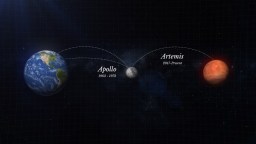NASA finds water on sunlit moon surface for first time

Credit: Helen_f via AdobeStock
- Scientists have long thought that water exists on the lunar surface, but it wasn’t until 2018 that ice was first discovered on the moon.
- A study published Monday used NASA’s Stratospheric Observatory for Infrared Astronomy to confirm the presence of molecular water.
- A second study suggests that shadowy regions on the lunar surface may also contain more ice than previously thought.
For the first time, scientists have confirmed the presence of water on the sunlit surface of the moon, a discovery with major implications for future moon missions and deep-space exploration.
Since the 1990s, a series of observations have suggested the moon harbors ice, but scientists haven’t been able to confirm whether the data was signaling the presence of water (H2O) or a chemical relative called hydroxyl, which is oxygen bonded with hydrogen. In 2018, scientists confirmed that water — in the form of ice — exists in the moon’s polar regions.
Now, a new study confirms that water — not just hydroxyl — exists on sunlit surfaces of the moon.
💦🌚 Water molecules were found in Clavius Crater, one of the largest craters visible from Earth on the Moon! This discovery from our @SOFIAtelescope indicates that water may be distributed across the surface, & not limited to cold, shadowed places. More: https://t.co/oIcCbbl50Y pic.twitter.com/Q5Ve6QwZJM
— NASA (@NASA) October 26, 2020
Twittertwitter.com
Publishing their findings in the journal Nature Astronomy on Monday, researchers examined the lunar surface using NASA’s Stratospheric Observatory for Infrared Astronomy (SOFIA). This airborne observatory is mounted on a customized Boeing 747 that flies at an altitude of about 45,000 feet. That’s high enough to rise above Earth’s lower atmosphere, which contains water vapor that prevents land-based observatories from getting a clear view of the moon.
Using SOFIA, the team took a close look at two sites near, one near the lunar equator and another near the Clavius crater, one of the largest craters on the moon. The researchers observed light signals that could only have come from molecular water.
“We had indications that H2O – the familiar water we know – might be present on the sunlit side of the Moon,” Paul Hertz, director of the Astrophysics Division in the Science Mission Directorate at NASA Headquarters in Washington, said in a statement. “Now we know it is there. This discovery challenges our understanding of the lunar surface and raises intriguing questions about resources relevant for deep space exploration.”

SOFIACredits: NASA/Daniel Rutter
Still, it’s not as if the moon is dripping wet. The observations suggest that a cubic meter of the lunar surface (in the Clavius crater site, at least) contains water in concentrations of 100 to 412 parts per million. That’s roughly equivalent to a 12-ounce bottle of water. In comparison, the same plot of land in the Sahara desert contains about 100 times more water.
But a second study suggests other parts of the lunar surface also contain water — and potentially lots of it. Also publishing their findings in Nature Astronomy on Monday, the researchers used the Lunar Reconnaissance Orbiter to study “cold traps” near the moon’s polar regions. These areas of the lunar surface are permanently covered in shadows. In fact, about 0.15 percent of the lunar surface is permanently shadowed, and it’s here that water could remain frozen for millions of years.
Some of these permanently shadowed regions are huge, extending more than a kilometer wide. But others span just 1 cm. These smaller “micro cold traps” are much more abundant than previously thought, and they’re spread out across more regions of the lunar surface, according to the new research.

Credit: dottedyeti via AdobeStock
Still, the second study didn’t confirm that ice is embedded in micro cold traps. But if there is, it would mean that water would be much more accessible to astronauts, considering they wouldn’t have to travel into deep, shadowy craters to extract water.
Greater accessibility to water would not only make it easier for astronauts to get drinking water, but could also enable them to generate rocket fuel and power.
“Water is a valuable resource, for both scientific purposes and for use by our explorers,” said Jacob Bleacher, chief exploration scientist in the advanced exploration systems division for NASA’s Human Exploration and Operations Mission Directorate, in a statement. “If we can use the resources at the Moon, then we can carry less water and more equipment to help enable new scientific discoveries.”





